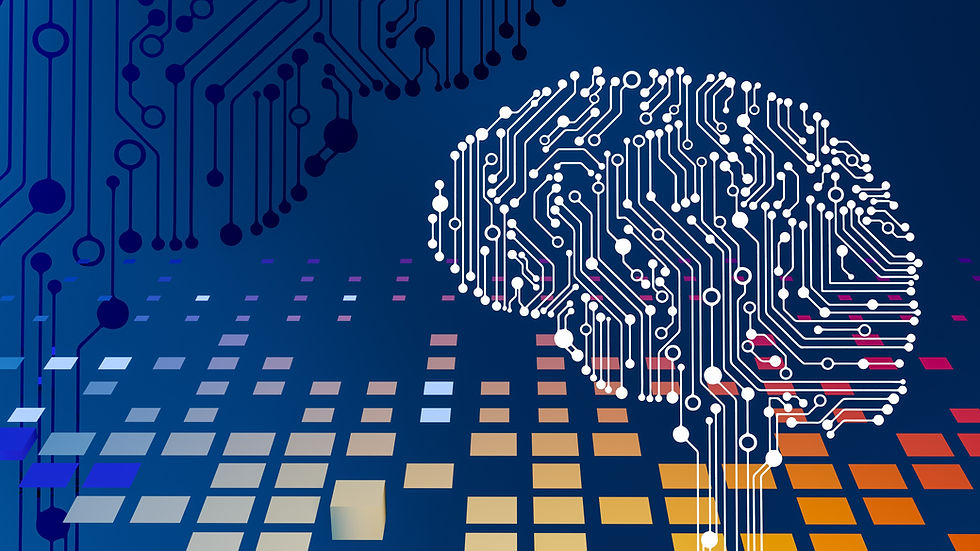New Era of Generative AI
- dtiTek

- Jun 15, 2023
- 3 min read
Generative AI is a fast-growing part of artificial intelligence, changing how we make and use information. It uses big data sets and smart learning systems to make new text, pictures, etc. Often, you can't even tell it's different from what a person would make.
This AI is changing many areas, like movies, medicine, and advertising. It's used to make cool special effects for films and TV, develop new medicine and ways to treat illness and make ads that feel personal to each person.
And this is just the beginning! Generative AI might start to make new types of art and music, develop new products or services, and maybe even dream up new ideas.
Here are some good things about generative AI:
More creativity: Generative AI could help us develop new ideas and possibilities. It could come up with new story ideas, new stuff to make, or new ad campaigns.
Getting more done: Generative AI could take over jobs that take a lot of time and are the same thing repeatedly. For instance, it could write reports, send emails, or create presentations.
Better communication: Generative AI could help us say what we mean better by giving us new ways to say it. It could write personalized messages, make new pictures, or even translate languages.
But it's not all good. There are some possible problems with generative AI too. For example, it could make fake news or mean messages. It's essential to remember these risks and use generative AI well.
So, even with these risks, generative AI seems exciting. With all the ways it could make us more creative, get more done, and talk better, it could change how we live and work.
With its ability to create realistic and human-like content, Generative AI is finding applications in various industries, further expanding its potential impact on our lives. Here are some additional use cases and information about generative AI:
1. Entertainment and Media: Generative AI is transforming the entertainment industry by enabling the creation of stunning visual effects and realistic animations for movies, TV shows, and video games. It can also generate background music, sound effects, and even whole scores, reducing the time and cost required for music composition.
2. Healthcare and Drug Discovery: Generative AI is used to develop new drugs and treatments in healthcare. By analyzing vast amounts of medical data, including patient records, clinical trials, and scientific literature, generative AI models can suggest potential drug candidates, predict drug interactions, and simulate the behavior of molecules. This accelerates the drug discovery process and holds the promise of personalized medicine.
3. Design and Creative Arts: Generative AI pushes the boundaries of design and creative arts. It can generate unique and innovative product designs based on specific requirements and constraints. For example, generative AI in architecture can generate building designs that optimize energy efficiency, aesthetics, and structural integrity. In fashion, it can create new clothing designs and patterns. Artists can also leverage generative AI to explore novel artistic styles and techniques.
4. Marketing and Personalization: Generative AI revolutionizes marketing strategies by allowing businesses to create highly personalized campaigns. Generative AI models can generate tailored content by analyzing customer data and preferences, such as advertisements, product recommendations, and social media posts. This personalization enhances customer engagement, increases conversion rates, and improves customer satisfaction.
5. Education and Training: Generative AI has the potential to transform education and training methodologies. It can generate interactive and adaptive learning materials, such as virtual tutors or simulations, tailored to individual students' needs. This personalized approach can enhance engagement, improve knowledge retention, and provide tailored feedback to learners.
6. Content Creation and Curation: Generative AI can assist content creators by automating the generation of written content, such as articles, blog posts, and social media updates. It can also aid in content curation by suggesting relevant articles, videos, or images based on user preferences and interests. This automation can save time and effort for content creators, enabling them to focus on higher-level tasks.
7. Translation and Language Processing: Generative AI is making significant strides in natural language processing and machine translation. It can generate accurate and fluent translations between languages, enabling effective cross-cultural communication. Additionally, it can assist in language learning by providing interactive exercises, pronunciation guides, and personalized language practice.
As generative AI continues to advance, ethical considerations become crucial. Ensuring transparency, accountability, and fairness in its use is essential to mitigate the risks associated with misuse and manipulation. By leveraging generative AI responsibly, we can unlock its full potential and benefit from its transformative capabilities in various aspects of our lives.
At dtiTek our team of AI experts can help you with your next big AI project. If you have any questions, don't hesitate to contact us. We would be happy to answer any questions and help you get started.


